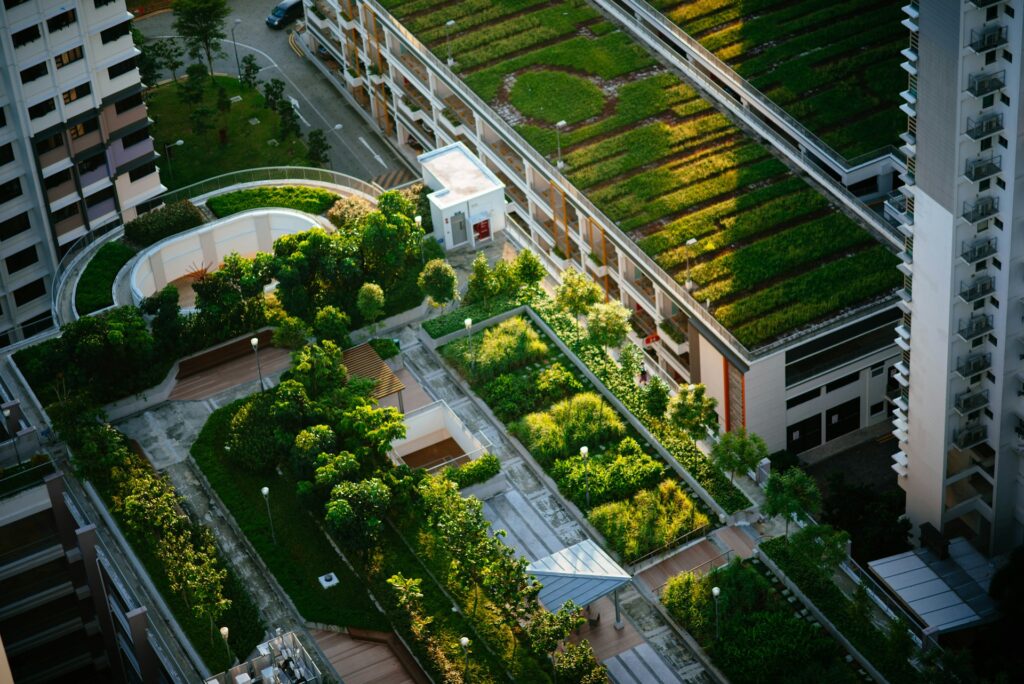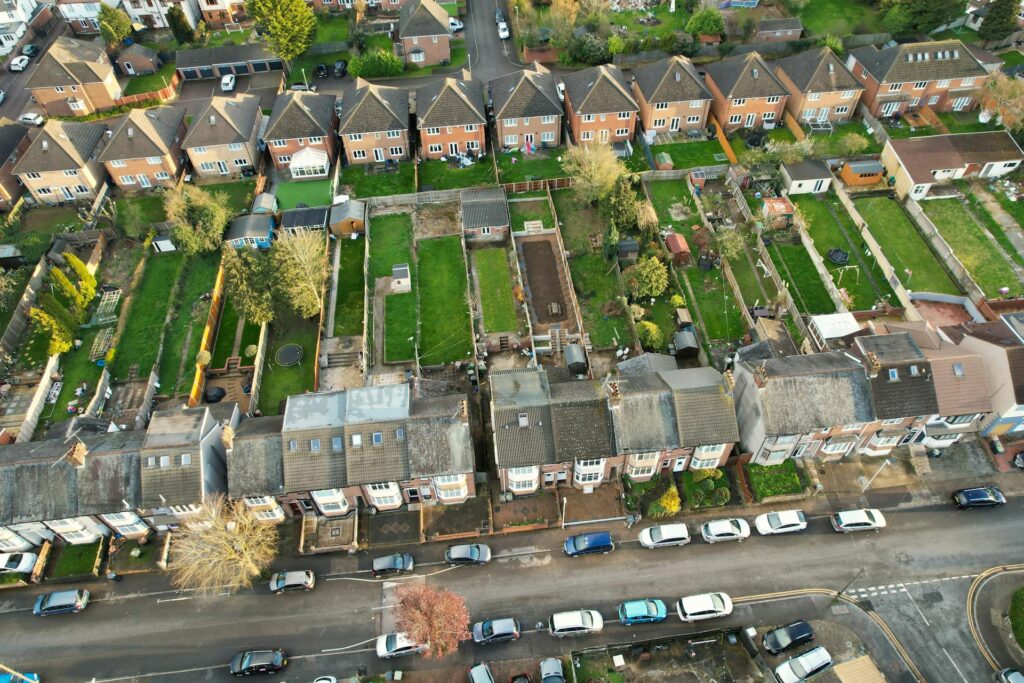
Urban permaculture
Permaculture, derived from “permanent agriculture,” is a design system that aims to create sustainable and self-sufficient ecosystems modeled after natural patterns.
Urban permaculture includes activities like rooftop, balcony or small yard gardening, community gardening, rainwater harvesting, composting, and the cultivation of edible landscapes. It seeks to enhancing food security, biodiversity, community resilience and creation of self-sustaining systems, while minimizing environmental impact and resource consumption.
Benefits of urban permaculture
The benefits of urban permaculture include:
1. Nutritional Benefits: Direct involvement in home and community gardens promotes the consumption of fresh fruits and vegetables, with studies reporting a 10% increase in consumption among participants in community gardens. This is especially beneficial for those who may otherwise struggle to afford fresh produce.
Studies have indicated that children who participate in gardening learn to appreciate healthy foods, leading to increased vegetable consumption.
2. Enhanced Food Security: Urban agriculture can increase the availability of fresh, locally produced foods, which can improve food security for urban residents and reduce reliance on food transportation. This holds especially true for fruits and vegetables, which thrive in cultivated intensively in urban spaces.
3. Cooling down cities: Urban agriculture can help mitigate the heat island effect, where urban areas are significantly warmer than their surrounding rural areas. By providing shade and cooling through transpiration and evaporation. This can reduce temperatures in cities, potentially lowering the need for energy-intensive air conditioning and reducing greenhouse gas emissions.
4. Physical and Mental Health: Gardening and farming activities have a positive impact on a range of mental health outcomes, such as reducing symptoms of anxiety and depression, improving cognitive performance, and enhancing mood disturbance. They can also have therapeutic effects on mental health, providing a relaxing environment and a sense of belonging.
5. Improved Pollinator Habitats and Biodiversity Enhancement: Urban agriculture enhances pollinator habitats, increasing abundance of bees, including both rare and common species.
This is achieved by enhancing floral resources, such as flowering hedgerows, which increase the abundances of native insect pollinators in and around restored areas.
The presence of native plants and a variety of nesting and foraging resources in cities can provide refuge for bees.
6. Air and Water Filtration: Urban plantings, especially trees and diverse species, contribute to air and water quality in urban areas.
Trees act as mini-reservoirs, intercepting storm-water runoff and reducing soil erosion, thereby improving water quality.
They also remove particles and gases from the atmosphere, and can increase air dispersion near pollution sources, improving local air quality.
Mature trees, such as Acacia tortilis in Africa and the Middle East, and Willow and Poplar trees in Northern Hemisphere, have a higher capacity to intercept storm water and remove pollutants.
7. Carbon Sequestration: Plants absorb carbon dioxide, helping to mitigate climate change. Urban agriculture contributes to this by growing trees and other plants that sequester carbon.
To enhance urban agriculture’s sustainability, extend the lifespan of materials and structures like raised beds and composting infrastructure. This reduces environmental impact per food serving.
8. Job Creation and Skill Development: Urban agriculture can create employment opportunities and provide training for individuals seeking stable employment.
9. Environmental Conservation: By creating green spaces in urban areas, urban permaculture supports environmental conservation efforts and brings nature closer to city residents.
10. Sustainable Resource Use: Creating self-sustaining ecosystems that are efficient and require minimal external inputs. This is achieved through various practices like water conservation, using rainwater or recycled grey water for irrigation, composting or companion planting.
Why is it important to integrate sustainable practices into urban settings?

Integrating sustainable practices into urban settings is crucial for achieving a balance between economic growth, environmental protection, and social well-being. Urban permaculture has even more benefits than previously mentioned:
Economic Benefits: Sustainable practices can lead to cost savings and increased property values. Green buildings, for instance, are projected to have higher market value and attract tenants due to the growing demand for sustainable spaces.
Environmental Impact: Permaculture techniques, including the use of green buildings, reduce energy consumption, optimize water usage, and promote eco-friendly construction materials. This helps mitigate climate change and preserve natural resources.
Health and Well-being: Green buildings prioritize occupant well-being by offering better indoor air quality, which can reduce the risk of respiratory diseases and allergies. They also promote mental health and stress reduction.
Permaculture designs can further enhance these benefits by creating microclimates that improve air quality and reduce noise pollution.
Social Inclusivity: Permaculture fosters social inclusivity by creating spaces accessible to all, promoting social interactions, and enhancing overall livability. Community gardens and urban farms, for example, can serve as hubs for community engagement and education.
Real-life examples of successful urban permaculture projects in UK:
1. Jack, the founder of Jack’s Patch Urban Garden
Jack, the founder of Jack’s Patch Urban Garden, actively advocates for urban farming and sustainable living. Through his efforts, Jack empowers individuals and communities to take control of their food production and reduce their reliance on conventional farming methods.
His urban farming approach is based on permaculture, a system that mimics natural ecosystems to enhance sustainability. Permaculture focuses on efficient use of resources, reducing waste, and creating closed-loop systems.
I am truly impressed by his passion for gardening. Even with only a small plot in the city center, he inspired a person to offer him a larger piece of land in exchange for fresh produce. This opportunity allows him to expand his garden, continuing his journey of growth and development.
He transformed a plot of land previously covered in long grass and clay soil using the no-dig method, in the heart of London, into a thriving vegetable market. This demonstrates the potential of urban farming to enrich both individual lives and the urban environment.
This is an example of urban farming hub that offers small-scale farming, work spaces, and a café. It includes aquaponic fish farming, indoor allotments, and a poly-tunnel, demonstrating that food can be grown even in limited urban spaces.
I think it is amazing idea for restaurants to grow their own food. By cultivating their own gardens, restaurants ensure the freshness and quality of their ingredients, significantly reducing their carbon footprint and transportation costs. It allows restaurants to experiment with a variety of ingredients, leading to innovative and appealing dishes.
3. Alessandro Vitale- ‘Spicymoustache’
Alessandro Vitale, also known as ‘Spicymoustache,’ is an urban farmer based in London with an impressive 8×5 meter garden. Surprisingly, he does not look like a gardener at all.
He is known for his garden that maximizes food production in a small space, focusing on organic and sustainable practices.
I also like his DIY projects around the garden, such as plant containers made from plastic bottles and an oak barrel pond. He even managed to squeeze in a small greenhouse.
He grows a variety of fruits, vegetables, herbs, flowers, and even mushrooms!
Also he produces educational content about gardening and maximizing food production in limited spaces, with a zero-waste approach to sustainability. His work has been featured in various media outlets, including BBC Gardeners World, The Observer, and The Guardian.
His innovative use of vertical space and creative DIY solutions for gardening in urban settings make his garden a remarkable example of how to make the most of limited space.
4. The National Garden Scheme
I think you might find this interesting. The National Garden Scheme (NGS) is a UK-based charity dedicated to promoting the joy of gardening and raising funds for charity since 1927.
The National Garden Scheme gives visitors unique access to over 3,500 exceptional private gardens in England, Wales, Northern Ireland and the Channel Islands.
On their website you can browse through over 3,500 gardens by arrangement, by county, or by garden type, including public gardens and special garden events. You can also plan your visits.
You can get involved with the NGS through volunteering opportunities, making a donation, opening your garden, or hosting a Great British Garden Party. What’s more the funds collected are directed towards supporting various charitable causes.
Link to their website – https://ngs.org.uk/
Real-life examples of successful urban permaculture projects around the world:
1. Singapore
Singapore is well known for its dynamic and innovative approach to urban agriculture, especially in the agri-food sector, aiming to reduce its heavy reliance on food imports, which account for over 90% of its food. The ’30 by 30′ initiative, part of the Singapore Green Plan 2030, targets producing 30% of its food locally by 2030. This underscores Singapore’s dedication to a resilient food future.
The sector prioritizes sustainable solutions, focusing on plant-based proteins and high-tech agriculture to enhance fo od security and decrease import dependence. Singapore implements various strategies, like optimizing food production areas, funding research, and promoting local produce to support the sector’s transformation.
Utilizing innovative methods such as multi-story LED lighting and recirculating aquaculture systems to produce 10 to 15 times more than traditional farms.
Singapore is also exploring the potential of urban farms in more urban spaces, from car park rooftops to reused outdoor spaces and retrofitted building interiors. This includes initiatives like Citiponics, one of Singapore’s first rooftop farms, and Natsuki’s Garden, a greenhouse in the center of the city designed for the tropical climate.
These projects demonstrate Singapore’s innovative approach to urban agriculture, showcasing how urban spaces can be transformed into productive farming areas.
2. Poland
Krakow has launched the Krakow Community Gardens program, through which it lends its areas to residents free of charge, to bring different functions to the city and communal spaces. Everyone can set up a community garden; the only condition is choosing an appropriate urban plot and gathering at least three people for the initiative.
Residents are encouraged to set up gardens, which serve as multi functional spaces for recreation, cooperation, and care for the environment. The initiative is supported by the Krakow Municipal Greenspace Authority, which offers guidance, tools, and training to help residents establish their gardens. This project is part of a broader effort to strengthen social bonds, improve the quality of urban life, and promote sustainable practices in Krakow.
3. Australia
You wouldn’t believe it if you didn’t see it. Small urban garden of David Elliot. With over 50 fruit trees, mostly edibles, and a variety unmatched by local supermarkets, this garden showcases the potential of urban permaculture.
This garden is a great example of the diversity achievable even in a small space. Many trees, including dwarf varieties, are grafted to enhance variety and ensure a constant harvest. Alongside vegetables and vertical planting techniques, flowers and water features. These elements coexist harmoniously, fostering a vibrant microclimate.
4. Canada
Next example is a little bigger urban garden in Calgary, Alberta, with Carmen and Christian from Urban Farm School. Their zone 3 permaculture garden on a quarter acre, experiences a temperature range from 0°C (32°F) in the mornings to 21°C (68°F) in the afternoons, and extreme weather like hailstorms with hail size of golf balls. The growing days could see as much as 16 1/2 hours of sunlight in a day.
They employ intriguing strategies to protect their crops from frost, hail, and other extreme weather events. For hail protection, they’ve implemented structures resembling greenhouses without a roof, covered only with netting to shield the crops. They utilize season extension techniques such as greenhouses.
Their front yard is an edible landscape with hugelkultur beds. Around the garden, they have greenhouses and water harvesting systems, creating a visually stunning and functional space. With a strong emphasis on soil health, they focus on soil-building practices such as thermophilic composting – hot composting method. Additionally, water features attract birds and insects, contributing to the garden’s biodiversity.
Summary
Urban permaculture is a transformative approach that integrates sustainable agriculture techniques into city spaces, creating self-sustaining ecosystems that enhance biodiversity and promote local food production. This approach tackles climate change and food security while enhancing urban life, turning landscapes into green havens.
By applying permaculture principles, even small urban areas can support holistic, nature-aligned systems that align with the rhythms of nature.
The future of urban permaculture is bright, promising a positive change in how cities function – environmentally, socially, and economically. It’s a necessary shift towards a more sustainable and equitable urban future.
Are you ready to turn your urban space into a haven of sustainability and abundance? Embrace the principles of permaculture and take action today. Start small with a balcony garden or a compost bin, and gradually expand your efforts. Every step you take toward creating a more sustainable urban environment makes a difference.
And remember, I’m here to support you on your journey. As a permaculture designer, I can assist you in transforming your urban space into a flourishing permaculture paradise. Together, let’s make our cities greener, healthier, and more resilient for future generations.


I’ve been visiting this site for years, and it never fails to impress me with its fresh perspectives and wealth of knowledge. The attention to detail and commitment to quality is evident. This is a true asset for anyone seeking to learn and grow.
This is top-notch! I wonder how much effort and time you have spent to come up with these informative posts.
Your writing style is cool and I have learned several just right stuff here. I can see how much effort you’ve poured in to come up with such informative posts.